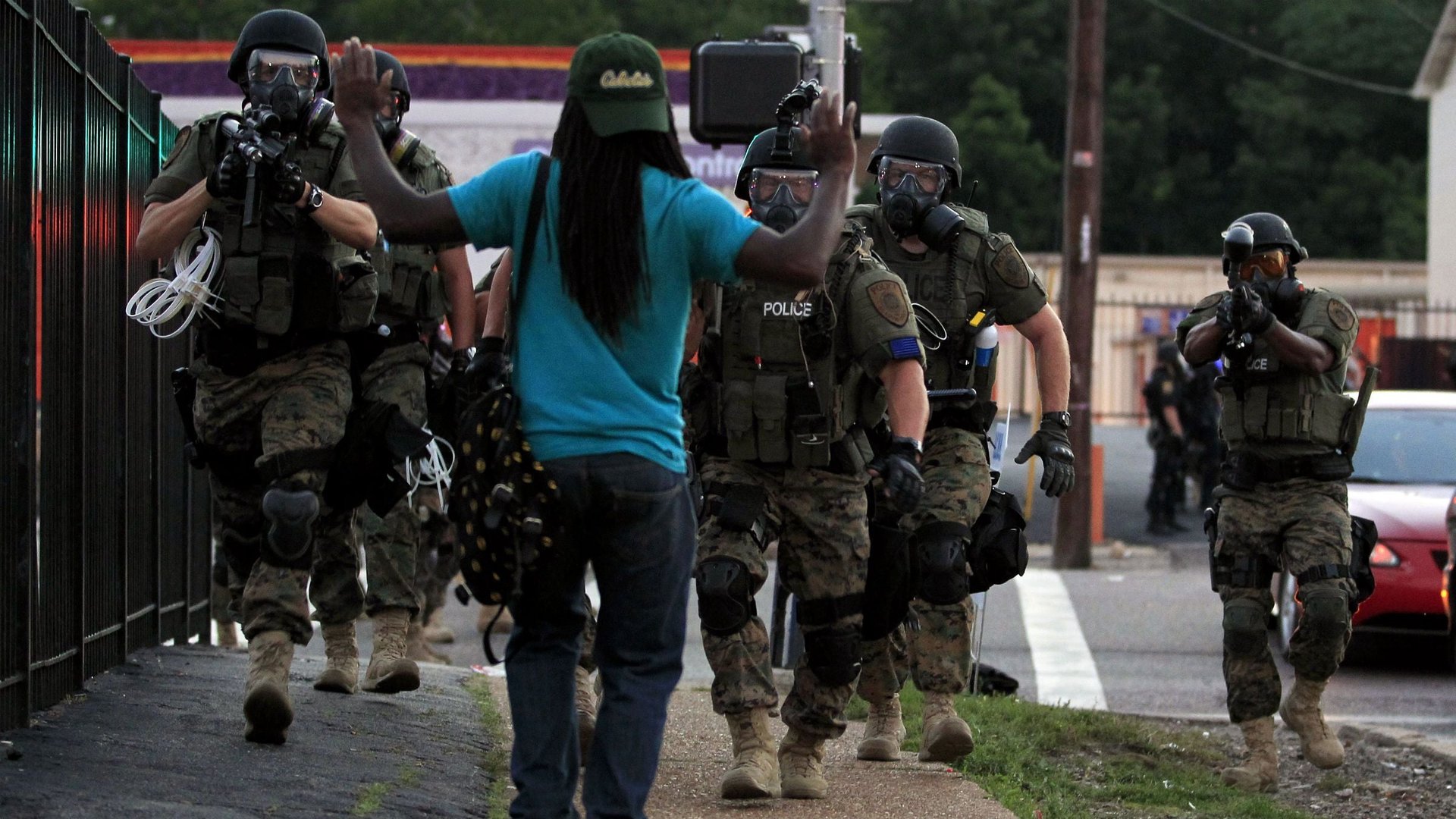Social media has given black people in Ferguson what the police cannot
The revolution hasn’t been televised, but it’s being Vined.


The revolution hasn’t been televised, but it’s being Vined.
Faster than I can pull down to refresh it, there’s a riot happening on my Twitter timeline. It is not the slinging of insults amongst YouTube commenters, nor the promulgation of conspiracy theories, but the circulation of real time accounts of the protestors of Ferguson, Missouri, a predominately black suburb of St. Louis, Missouri. A largely black crowd has organized in solidarity in response to the August 9 death of Michael Brown, a teenage boy who was killed by a Ferguson police officer. Brown was unarmed. His body lay in the street in the 80-degree weather for hours after his death. Early tweets I saw about his death included a picture of his bloody and broken form until those I follow complied with his family’s requests that they be deleted.
Since Michael Brown’s death, my feed has offered innumerable posts of shocked and angry neighbors gathering in remembrance of him. In the pictures and videos, his family, distraught, holds signs that do not betray their unbearable grief as effectively as their faces. People of all ages in the largely black crowd come together in solidarity, holding up their signs and hands to demonstrate the way Michael Brown died—surrendering—as phalanxes of police, armed with dogs and military equipment, trundled into their community over the weekend.
If it hadn’t been for social media, I wouldn’t have known any of this.
Though I usually get my news from a variety of sources, including Facebook and Twitter, this is the first time that I’ve felt that the internet alone is my most, no my only, suitable option for knowing the entirety of a story. Relying solely on television for news of Michael Brown’s death yields disparaging results. News reports from Ferguson about the protesters are numerous but muddling, limited by police who have purportedly used tear gas and rubber bullets against both protestors and the press; the Federal Aviation Administration, as per the request of the police, also issued a no-fly zone over Ferguson on Tuesday, restricting the ability of news helicopters to travel over the area.
Despite its physical limitations, the mainstream media, unfortunately, are still famously dismissive of violence perpetrated against black bodies, a sentiment having long-since been underlined by language that claims others like Michael Brown who faced violence at the hands of white people were somehow deserving of the fate that befell them. Headlines zero in on reports of the looting and destruction of local businesses by protesters, but hardly the death of an 18-year-old child and the righteous frustration behind that bolstered the physical expression of anger.
But there are no more excuses. The attempt at redemption for Michael Brown, the acknowledgement of the pain of his loved ones, and the anger of the black community is no longer limited just to using hashtags that allow us to find one another when pooling our narratives is the most feasible form of comfort and rebuilding. Searching Ferguson on Twitter not only yields results of speculations about the truth, but the truth itself—easily accessible, bare-boned and exposed in images of resentful faces, in the dulcet shouts blaring from Vines, in the untrussed Facebook status updates, regardless of how certain sources choose to package it.
Consider that even an African-American reporter at one of the country’s most influential media outlets relies on this power. Last night, as Washington Post journalist Wesley Lowery was slammed into a soda machine and taken into custody, his first instinct was to tell officers that he was not resisting. His second: “tweet that they’re arresting me, tweet that they’re arresting me,” he told a colleague.
The social media accounts of the people in Ferguson give those of us feeling an echo of the implosion there an opportunity at remote solidarity. Social media allows, in this case, that we are at the very least able to hear the pain of the people at Ferguson at ground-zero. An online petition of 60,000 signatures implores president Barack Obama enact federal laws in response to police brutality, and groups in cities all over the country have sprouted to observe a national moment of silence for victims of police brutality today. Twitter and Instagram hashtags such as #IfIWasGunnedDown and #PleaseDontShoot attempt to show the disproportionate media attention to ideas of black people as violent, and to reclaim the humanity of the black experience that the callousness of media bias often strips away from it. Through the screens of our devices, we’re able to borrow the vision of the eyewitnesses and help shoulder from afar the burgeoning tension that rocks their community.
The police in Ferguson have unjustly silenced Michael Brown, but social media has given to those in his community what the mainstream media and authorities there attempt to stifle: agency and authority over their own stories, theirs to tell, with a voice that calls so loudly even those in Gaza can hear.
Social media has preserved Ferguson’s opportunity to speak the truth to those who care about listening.
And the world is listening.